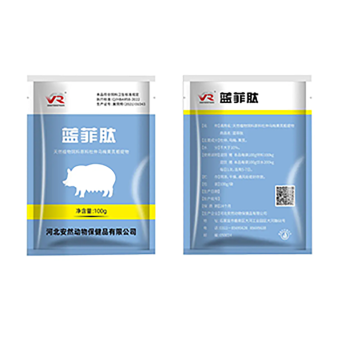- Afrikaans
- Albanian
- Amharic
- Arabic
- Armenian
- Azerbaijani
- Basque
- Belarusian
- Bengali
- Bosnian
- Bulgarian
- Catalan
- Cebuano
- Corsican
- Croatian
- Czech
- Danish
- Dutch
- English
- Esperanto
- Estonian
- Finnish
- French
- Frisian
- Galician
- Georgian
- German
- Greek
- Gujarati
- Haitian Creole
- hausa
- hawaiian
- Hebrew
- Hindi
- Miao
- Hungarian
- Icelandic
- igbo
- Indonesian
- irish
- Italian
- Japanese
- Javanese
- Kannada
- kazakh
- Khmer
- Rwandese
- Korean
- Kurdish
- Kyrgyz
- Lao
- Latin
- Latvian
- Lithuanian
- Luxembourgish
- Macedonian
- Malgashi
- Malay
- Malayalam
- Maltese
- Maori
- Marathi
- Mongolian
- Myanmar
- Nepali
- Norwegian
- Norwegian
- Occitan
- Pashto
- Persian
- Polish
- Portuguese
- Punjabi
- Romanian
- Russian
- Samoan
- Scottish Gaelic
- Serbian
- Sesotho
- Shona
- Sindhi
- Sinhala
- Slovak
- Slovenian
- Somali
- Spanish
- Sundanese
- Swahili
- Swedish
- Tagalog
- Tajik
- Tamil
- Tatar
- Telugu
- Thai
- Turkish
- Turkmen
- Ukrainian
- Urdu
- Uighur
- Uzbek
- Vietnamese
- Welsh
- Bantu
- Yiddish
- Yoruba
- Zulu
نويابىر . 14, 2024 08:05 Back to list
stabilité amoxicilline injectable
Stability of Injectable Amoxicillin A Comprehensive Overview
Amoxicillin is a widely used antibiotic belonging to the penicillin class, commonly prescribed for bacterial infections such as pneumonia, bronchitis, and infections of the ear, nose, and throat. As a parenteral formulation, injectable amoxicillin offers advantages in terms of bioavailability and rapid onset of action, particularly in patients who cannot take oral medications. However, the stability of injectable formulations is a critical factor affecting their safety, efficacy, and shelf life.
Chemical Stability
The stability of injectable amoxicillin is primarily influenced by factors such as temperature, pH, and light exposure. Under unfavorable conditions, amoxicillin can undergo degradation, leading to the formation of inactive metabolites. Research has shown that amoxicillin is most stable at a neutral to slightly alkaline pH (around 6.0 to 8.0). Deviations from this pH range can accelerate the degradation process. Furthermore, exposure to high temperatures can compromise the chemical integrity of the drug, necessitating strict adherence to storage recommendations.
Physical Stability
In addition to chemical stability, physical stability is another crucial aspect to consider. Injectable solutions should remain clear and free from particulates throughout their shelf life. Turbidity or precipitation can indicate instability and may pose risks if administered to patients. Proper formulation techniques, including the use of stabilizers and appropriate excipients, are essential to maintain the physical integrity of the injectable preparation.
stabilité amoxicilline injectable

Compatibility and Interaction
Another vital consideration for the stability of injectable amoxicillin is its compatibility with other drugs when administered simultaneously via the same route. Various studies have shown that certain intravenous solutions or other medications may interact with amoxicillin, leading to precipitation or reduced efficacy. Hence, healthcare providers must be aware of potential drug-drug interactions and follow established guidelines for compatibility.
Storage and Handling
To maximize the stability of injectable amoxicillin, appropriate storage conditions must be observed. It is generally recommended to store amoxicillin injections in a cool, dry place, away from direct sunlight. The expiration date provided by the manufacturer should be strictly adhered to; using any medication beyond this date can be unsafe, as the stability may no longer be guaranteed.
Conclusion
In summary, the stability of injectable amoxicillin is influenced by several critical factors, including chemical properties, physical integrity, compatibility with other drugs, and appropriate storage conditions. Ensuring these factors are adequately addressed is crucial in maintaining the safety and efficacy of amoxicillin as a therapeutic agent. Healthcare providers must remain vigilant in their practices to guarantee that patients receive the highest quality care, particularly when it comes to injectable medications. Ongoing research into formulation improvements and stability testing will continue to enhance our understanding and management of this essential antibiotic, ensuring its effective use in combating bacterial infections.
-
Guide to Oxytetracycline Injection
NewsMar.27,2025
-
Guide to Colistin Sulphate
NewsMar.27,2025
-
Gentamicin Sulfate: Uses, Price, And Key Information
NewsMar.27,2025
-
Enrofloxacin Injection: Uses, Price, And Supplier Information
NewsMar.27,2025
-
Dexamethasone Sodium Phosphate Injection: Uses, Price, And Key Information
NewsMar.27,2025
-
Albendazole Tablet: Uses, Dosage, Cost, And Key Information
NewsMar.27,2025













